The Eve Of Ivan Kupalo/Vecher Nakanune Ivana Kupala, Ukrainian Soviet Socialist Republic, 1968

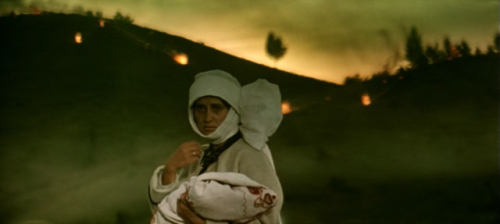




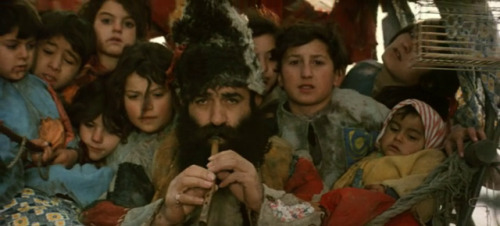

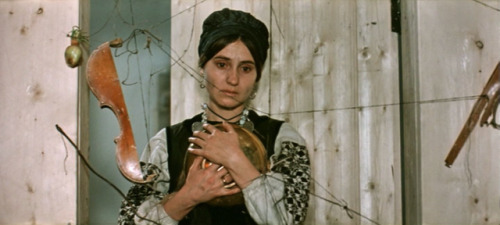

The Eve of Ivan Kupalo/Vecher nakanune Ivana Kupala, Ukrainian Soviet Socialist Republic, 1968
“A master of Ukrainian poetic cinema, Yuri Ilyenko gained world-wide acclaim as the cinematographer of Parajanov’s Shadows of Forgotten Ancestors. As a director, he stands proudly in the anti-realist tradition of Dovzhenko: of his nine films, all but one were banned until last year, when A Spring for the Thirsty stunned SFIFF audiences. The Eve of Ivan Kupalo-based on Gogol’s rendering of a Ukrainian folk tale-is probably Ilyenko’s most inspired and experimental work. The opposite of what one expects from a film taken from peasant mythology, it is neither quaint nor corny, and doesn’t depend on broad acting and hearty singing. Suffused with the earthly pantheism of a half-pagan Christianity, Ilyenko’s film celebrates the unbridled passions of a people linked to nature and the rites of the seasons, to animals and the spirits of the forests. The story-a young peasant’s pact with the evil spirit in order to win the hand of a rich man’s daughter-is a simple parable of the evil power of gold over man. The cinematic treatment is dazzlingly complex, a series of astonishing and inventive images-boldly composed in color Cinemascope-married to an equally ambitious sound montage of music and stylized effects.”
More Posts from Zholtochnik-blog and Others
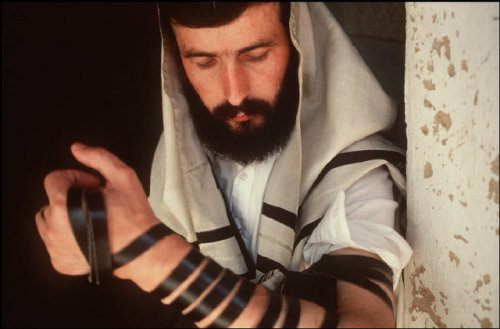
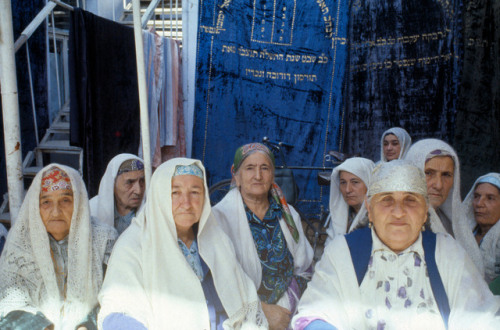
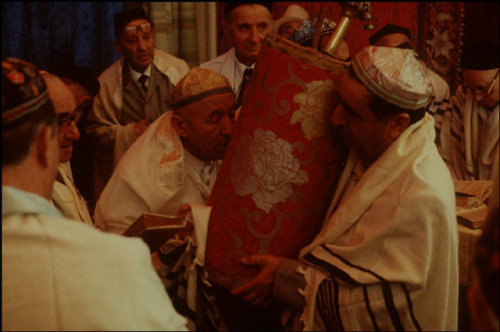
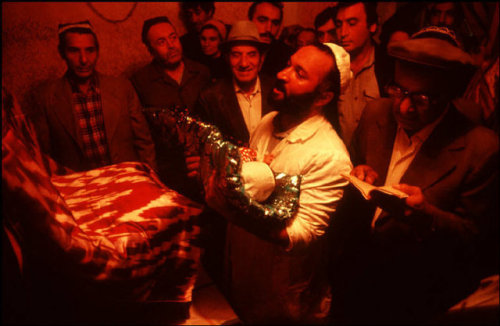

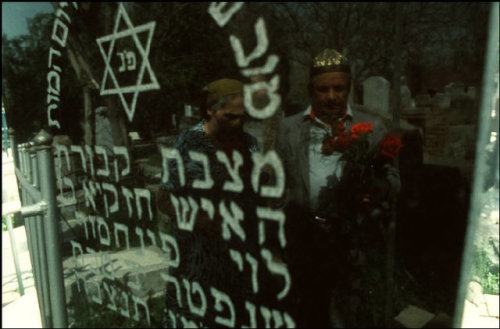
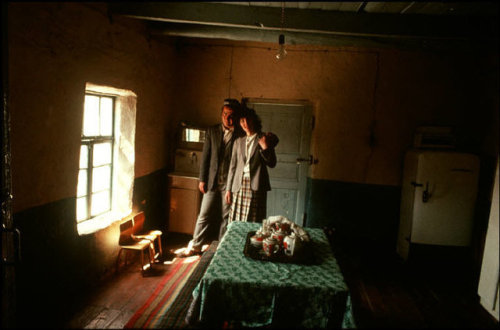
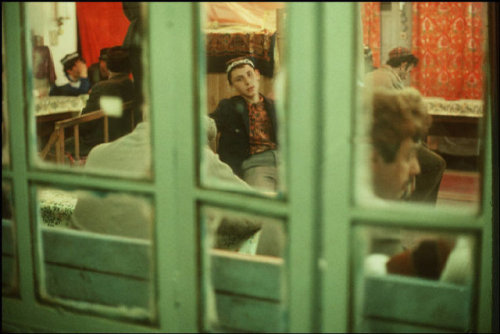
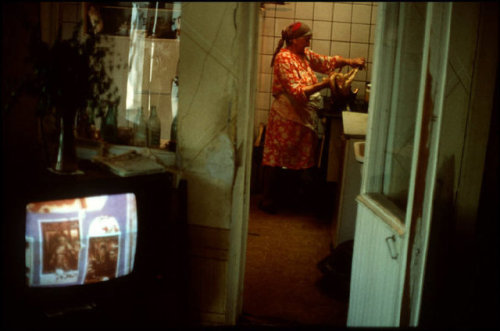
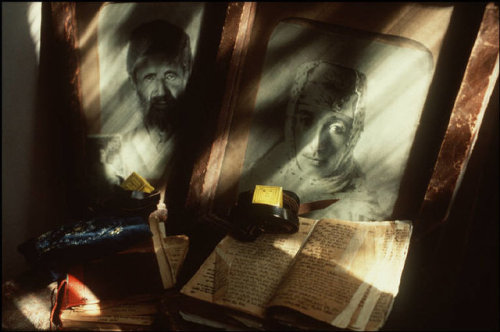
The Jewish people of Uzbekistan photographed by Gueorgui Pinkhassov
“The term Bukharan was coined by European travelers who visited Central Asia around the 16th century. Since most of the Jewish community at the time lived under the Emirate of Bukhara, they came to be known as Bukharan Jews. The name by which the community called itself is “Isro'il” (Israelites).
The appellative Bukharian was adopted by Bukharan Jews who moved to English-speaking countries, in an anglicisation of the Hebrew Bukhari. However, Bukharan was the term used historically by English writers, as it was for other aspects of Bukhara.
Bukharan Jews used the Persian language to communicate among themselves and later developed Bukhori, a Tajik dialect of the Persian language with small linguistic traces of Hebrew. This language provided easier communication with their neighboring communities and was used for all cultural and educational life among the Jews. It was used widely until the area was “Russified” by the Russians and the dissemination of “religious” information was halted. The elderly Bukharan generation use Bukhori as their primary language but speak Russian with a slight Bukharan accent. The younger generation use Russian as their primary language, but do understand or speak Bukhori.
The Bukharan Jews are Mizrahi Jews and have been introduced to and practice Sephardic Judaism.
The first primary written account of Jews in Central Asia dates to the beginning of the 4th century CE. It is recalled in the Talmud by Rabbi Shmuel bar Bisna, a member of the Talmudic academy in Pumbeditha, who traveled to Margiana (present-day Merv in Turkmenistan) and feared that the wine and alcohol produced by local Jews was not kosher. The presence of Jewish communities in Merv is also proven by Jewish writings on ossuaries from the 5th and 6th centuries, uncovered between 1954 and 1956.”


I’m posting this because it has sound samples for all the languages listed.
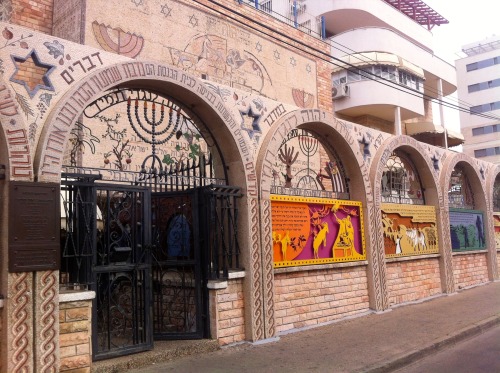
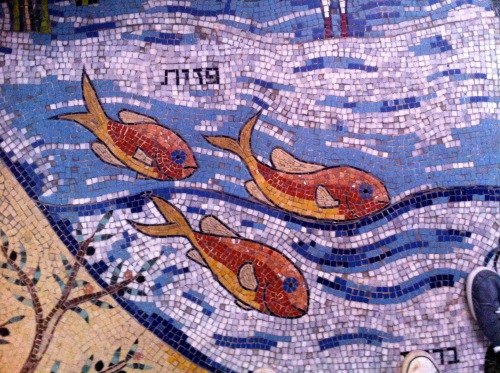
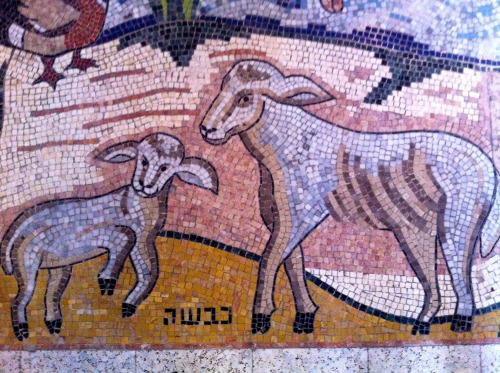
The Or Torah Synagogue in Akko, Israel is Tunisian, and decorated floor to wall to ceiling with beautiful tiles from Italy. Gorgeous.


Pokhara, Nepal
![[qozop]](https://64.media.tumblr.com/c9b7aa63788620204811265c3caf3ab6/tumblr_n17zk40XW51r1c6jgo1_500.png)
![[qozop]](https://64.media.tumblr.com/2d8b57d165b8c8d7f2fec0766528f807/tumblr_n17zk40XW51r1c6jgo3_500.jpg)
![[qozop]](https://64.media.tumblr.com/a786718636ccaad06c201421deb0195e/tumblr_n17zk40XW51r1c6jgo8_500.jpg)
![[qozop]](https://64.media.tumblr.com/5b90b9426888dee94386e4d88e6a72ab/tumblr_n17zk40XW51r1c6jgo6_500.jpg)
![[qozop]](https://64.media.tumblr.com/3cb02162adcbe62b736d5081fb984f59/tumblr_n17zk40XW51r1c6jgo5_500.jpg)
![[qozop]](https://64.media.tumblr.com/2b2cf1698f24ffb3a027773661eb4aaa/tumblr_n17zk40XW51r1c6jgo7_500.jpg)
![[qozop]](https://64.media.tumblr.com/abc3556ecda6327ee1221dea58ae7f54/tumblr_n17zk40XW51r1c6jgo2_500.jpg)
![[qozop]](https://64.media.tumblr.com/8c02c9d9db58c52dad2beda8ae0bd610/tumblr_n17zk40XW51r1c6jgo4_500.jpg)
[qozop]
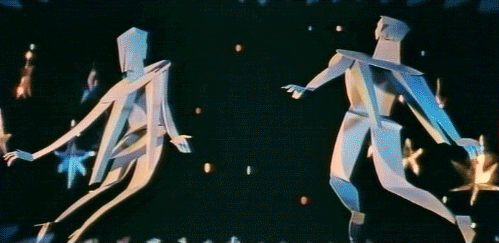
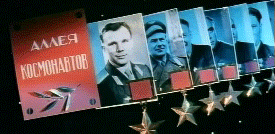


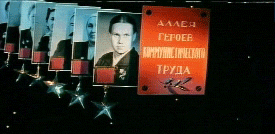
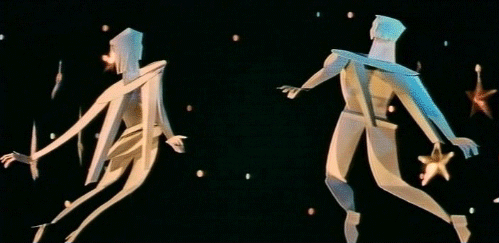


Jim Henson and Frank Oz Performing Ernie On Episode 1090, January 13, 1978
Season 9 (1977-1978) Ernie plays doctor and makes Bert be the patient for his check-up. He checks Bert’s heart, mouth and more. At the end, Bert wonders how he is feeling, but Ernie can’t tell him that until he’s a real doctor, twenty-three years from now. Bert faints after Ernie’s answer and Ernie wonders if there’s a doctor in the house.#rarepic


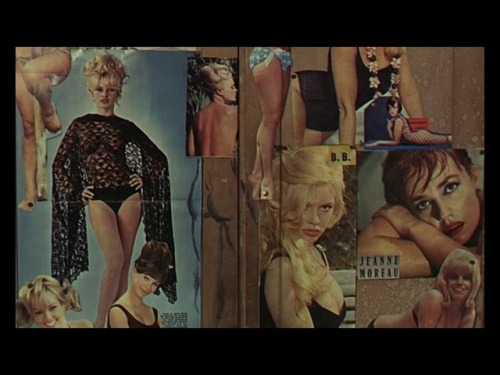




Agnès Varda
- Le Bonheur / Happiness
(1965)
-
 zealoussweetspuppy liked this · 1 month ago
zealoussweetspuppy liked this · 1 month ago -
 bloodbathstudio liked this · 3 months ago
bloodbathstudio liked this · 3 months ago -
 olloollo reblogged this · 4 months ago
olloollo reblogged this · 4 months ago -
 vyunok-obyknovenniy liked this · 5 months ago
vyunok-obyknovenniy liked this · 5 months ago -
 7-a-m liked this · 5 months ago
7-a-m liked this · 5 months ago -
 lavillanellex liked this · 5 months ago
lavillanellex liked this · 5 months ago -
 maryolive liked this · 7 months ago
maryolive liked this · 7 months ago -
 porsches liked this · 8 months ago
porsches liked this · 8 months ago -
 artofenemiesofusa reblogged this · 8 months ago
artofenemiesofusa reblogged this · 8 months ago -
 canastigone liked this · 8 months ago
canastigone liked this · 8 months ago -
 girlsneverdies liked this · 10 months ago
girlsneverdies liked this · 10 months ago -
 lunarrgrrls liked this · 11 months ago
lunarrgrrls liked this · 11 months ago -
 killappeal liked this · 1 year ago
killappeal liked this · 1 year ago -
 rutilanteestrella liked this · 1 year ago
rutilanteestrella liked this · 1 year ago -
 panksage liked this · 1 year ago
panksage liked this · 1 year ago -
 asingularcanadian liked this · 1 year ago
asingularcanadian liked this · 1 year ago -
 mollusken liked this · 1 year ago
mollusken liked this · 1 year ago -
 basedkahnum liked this · 1 year ago
basedkahnum liked this · 1 year ago -
 dykedruid liked this · 1 year ago
dykedruid liked this · 1 year ago -
 valcanous reblogged this · 1 year ago
valcanous reblogged this · 1 year ago -
 pinkpuppe reblogged this · 1 year ago
pinkpuppe reblogged this · 1 year ago -
 xekstrin liked this · 1 year ago
xekstrin liked this · 1 year ago -
 swedishjazz reblogged this · 1 year ago
swedishjazz reblogged this · 1 year ago -
 susamvezambaklar liked this · 1 year ago
susamvezambaklar liked this · 1 year ago -
 dieletztepanzerhexe reblogged this · 1 year ago
dieletztepanzerhexe reblogged this · 1 year ago -
 lastnunswithguns liked this · 1 year ago
lastnunswithguns liked this · 1 year ago -
 cutsofguiltcutsdeeper liked this · 1 year ago
cutsofguiltcutsdeeper liked this · 1 year ago -
 hushafoe liked this · 1 year ago
hushafoe liked this · 1 year ago -
 yoursweethome liked this · 1 year ago
yoursweethome liked this · 1 year ago -
 pav-troll liked this · 1 year ago
pav-troll liked this · 1 year ago -
 theunbearablelightnessofbein liked this · 1 year ago
theunbearablelightnessofbein liked this · 1 year ago -
 bunnyloaves liked this · 1 year ago
bunnyloaves liked this · 1 year ago -
 theotherone17 reblogged this · 1 year ago
theotherone17 reblogged this · 1 year ago -
 theotherone17 liked this · 1 year ago
theotherone17 liked this · 1 year ago -
 filoflife liked this · 1 year ago
filoflife liked this · 1 year ago -
 xulas liked this · 1 year ago
xulas liked this · 1 year ago -
 moon-atlas liked this · 1 year ago
moon-atlas liked this · 1 year ago -
 the-napoleon-of-crime liked this · 1 year ago
the-napoleon-of-crime liked this · 1 year ago -
 yellow-leaves-valley liked this · 1 year ago
yellow-leaves-valley liked this · 1 year ago -
 intertekstualisht reblogged this · 1 year ago
intertekstualisht reblogged this · 1 year ago -
 justinsomniachild liked this · 1 year ago
justinsomniachild liked this · 1 year ago -
 mulanmademeaman2 liked this · 1 year ago
mulanmademeaman2 liked this · 1 year ago -
 stronger-than-dirt reblogged this · 1 year ago
stronger-than-dirt reblogged this · 1 year ago -
 sporkgoblin liked this · 1 year ago
sporkgoblin liked this · 1 year ago -
 noonenotasole liked this · 1 year ago
noonenotasole liked this · 1 year ago
Jewish • I like psychiatry and anthropology and linguistics
114 posts